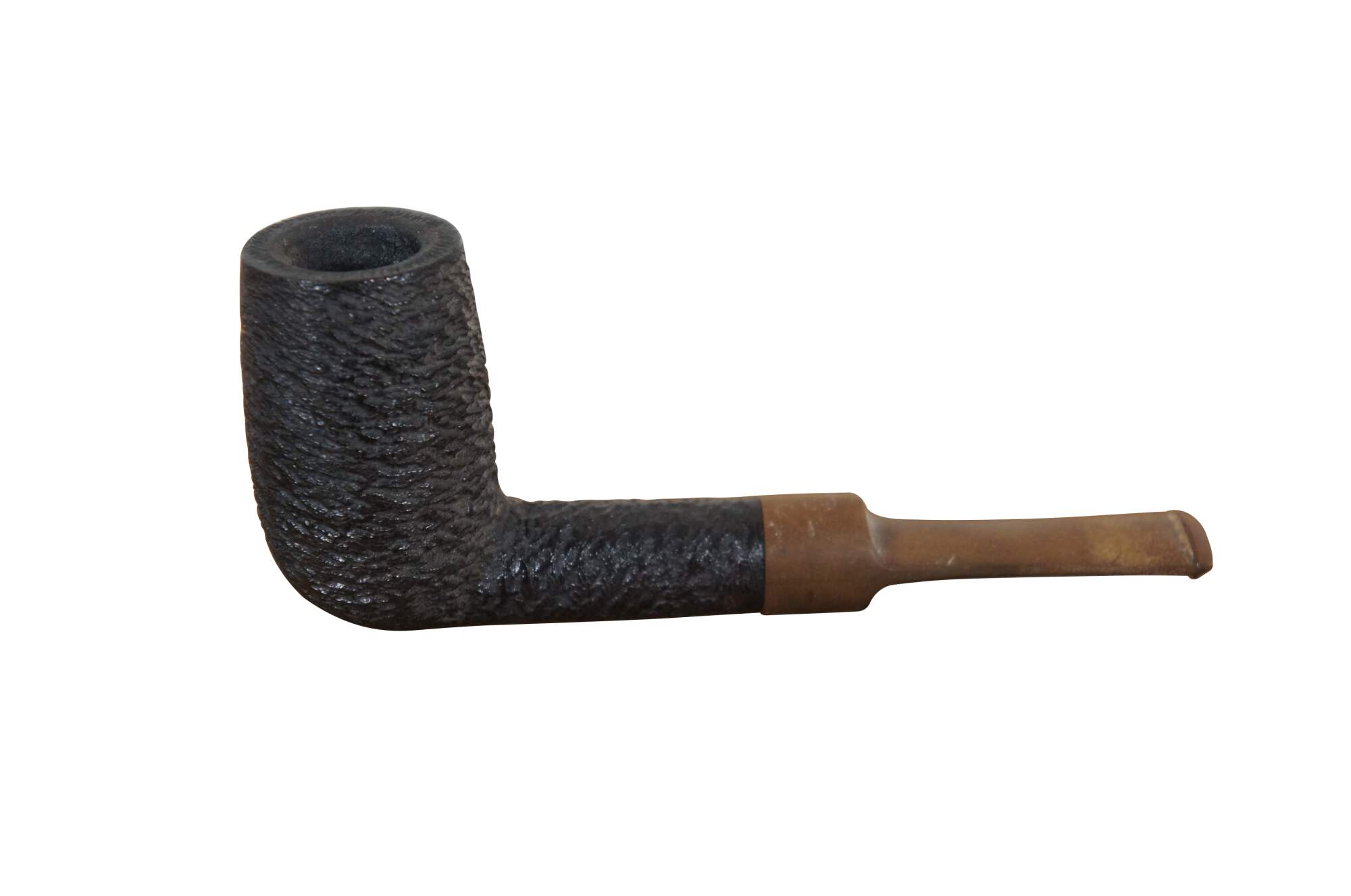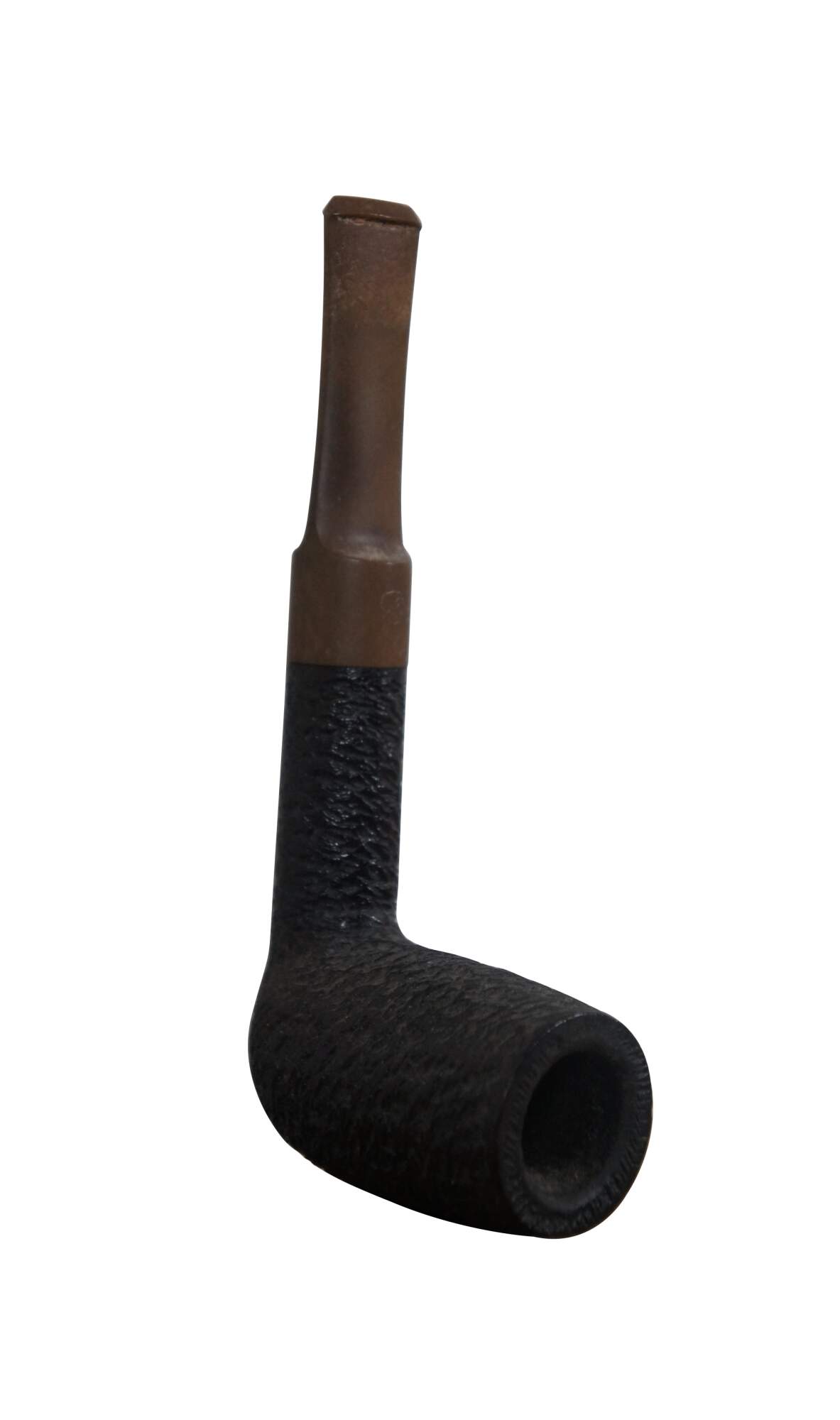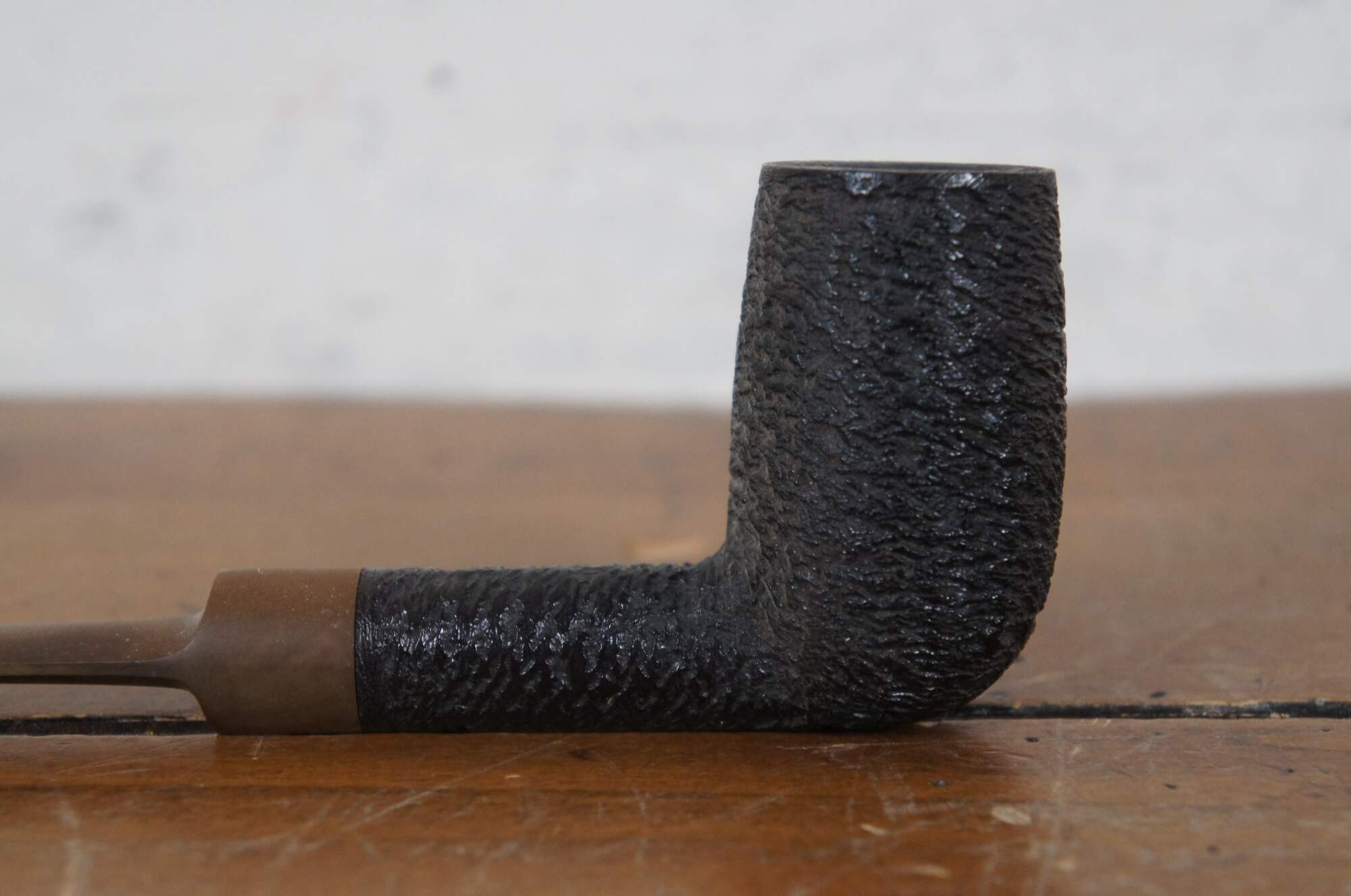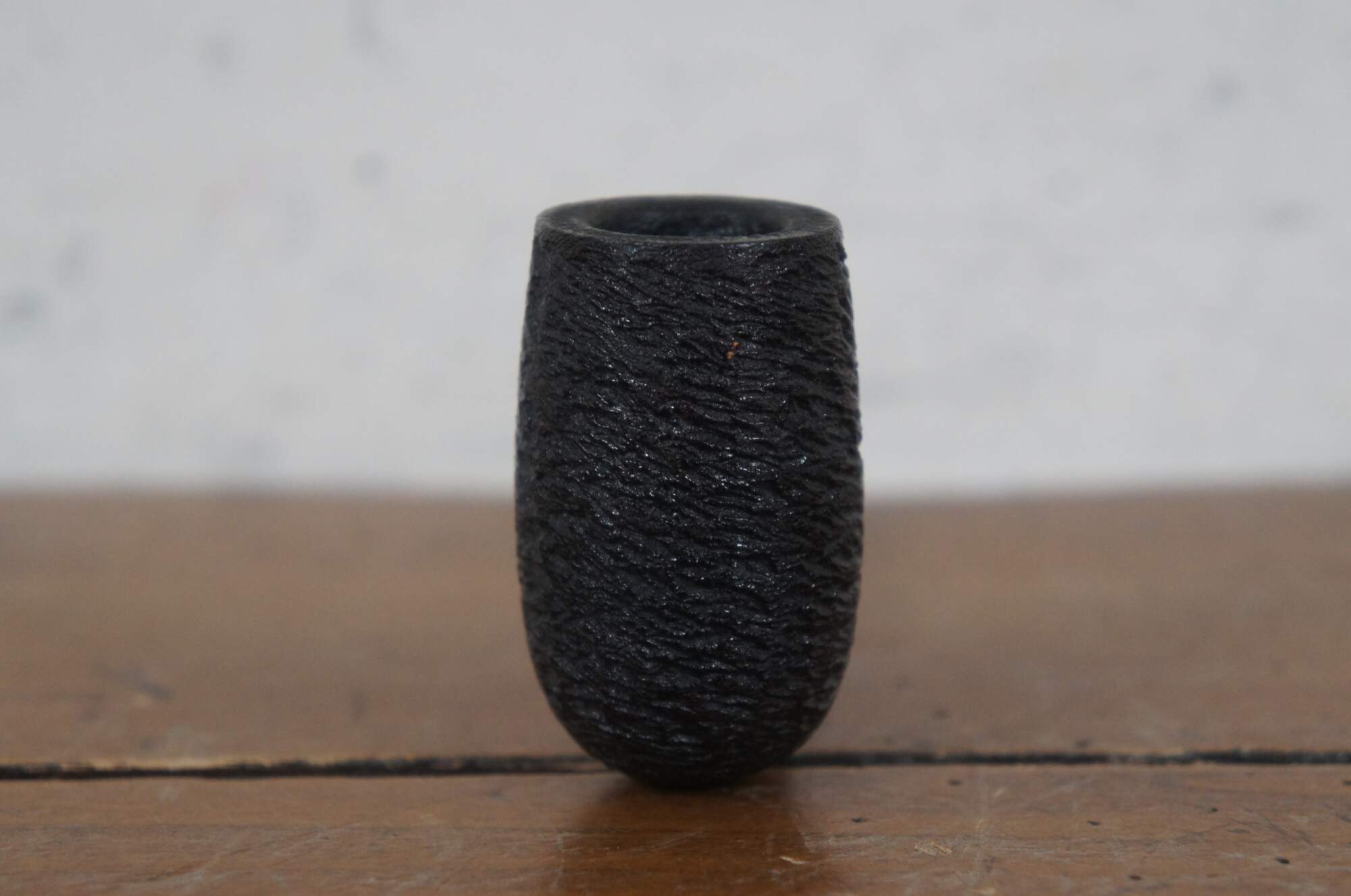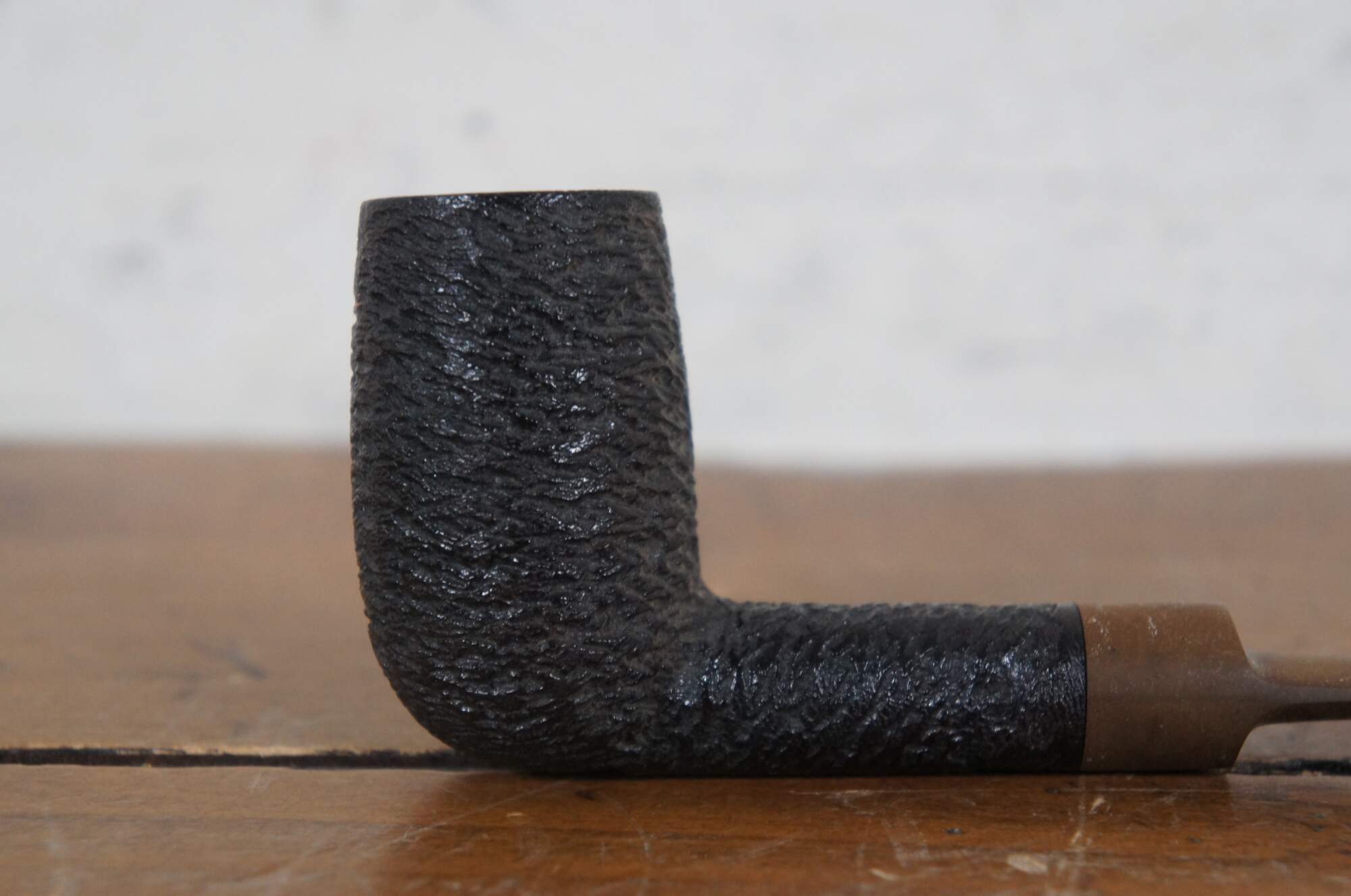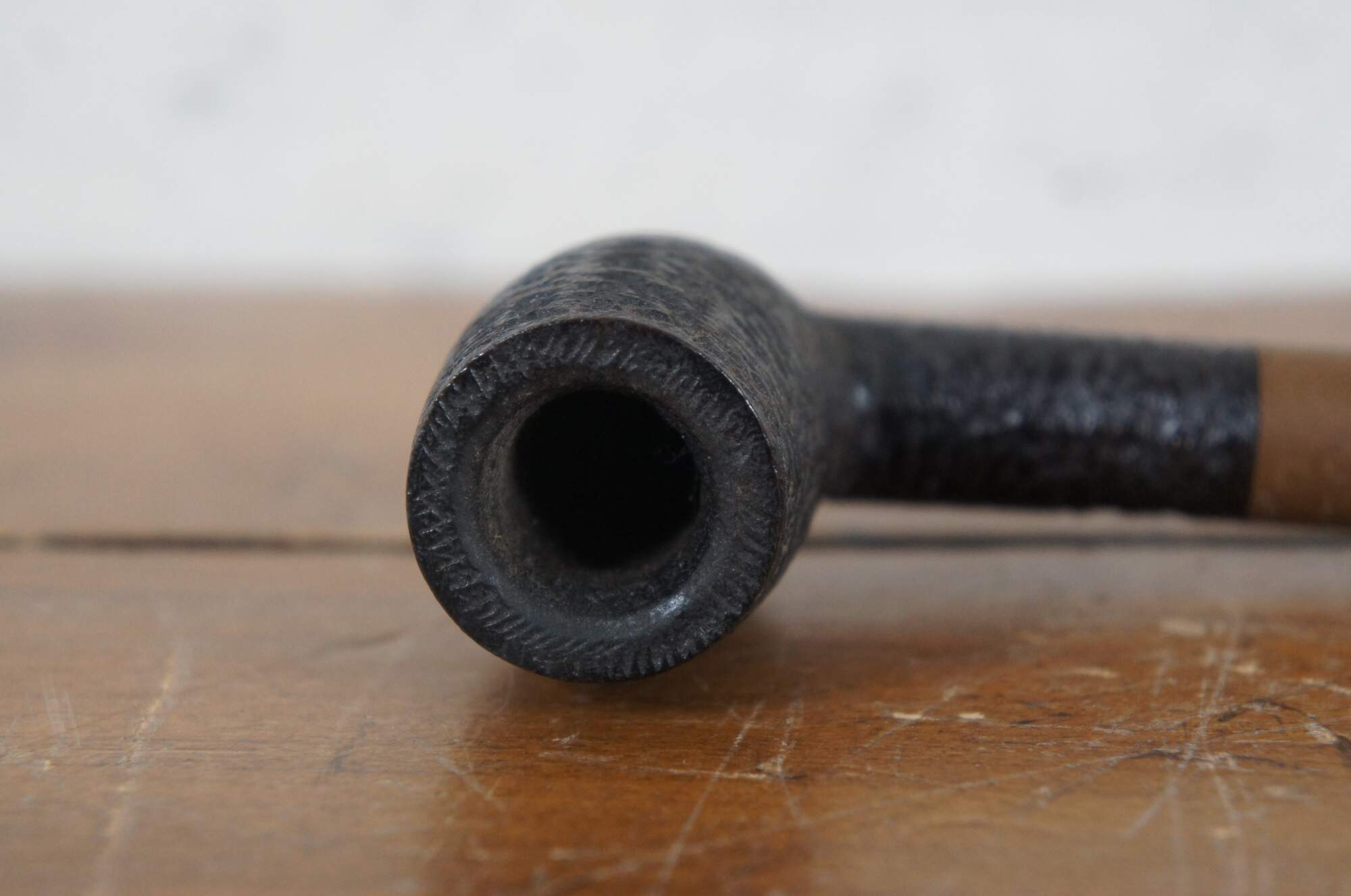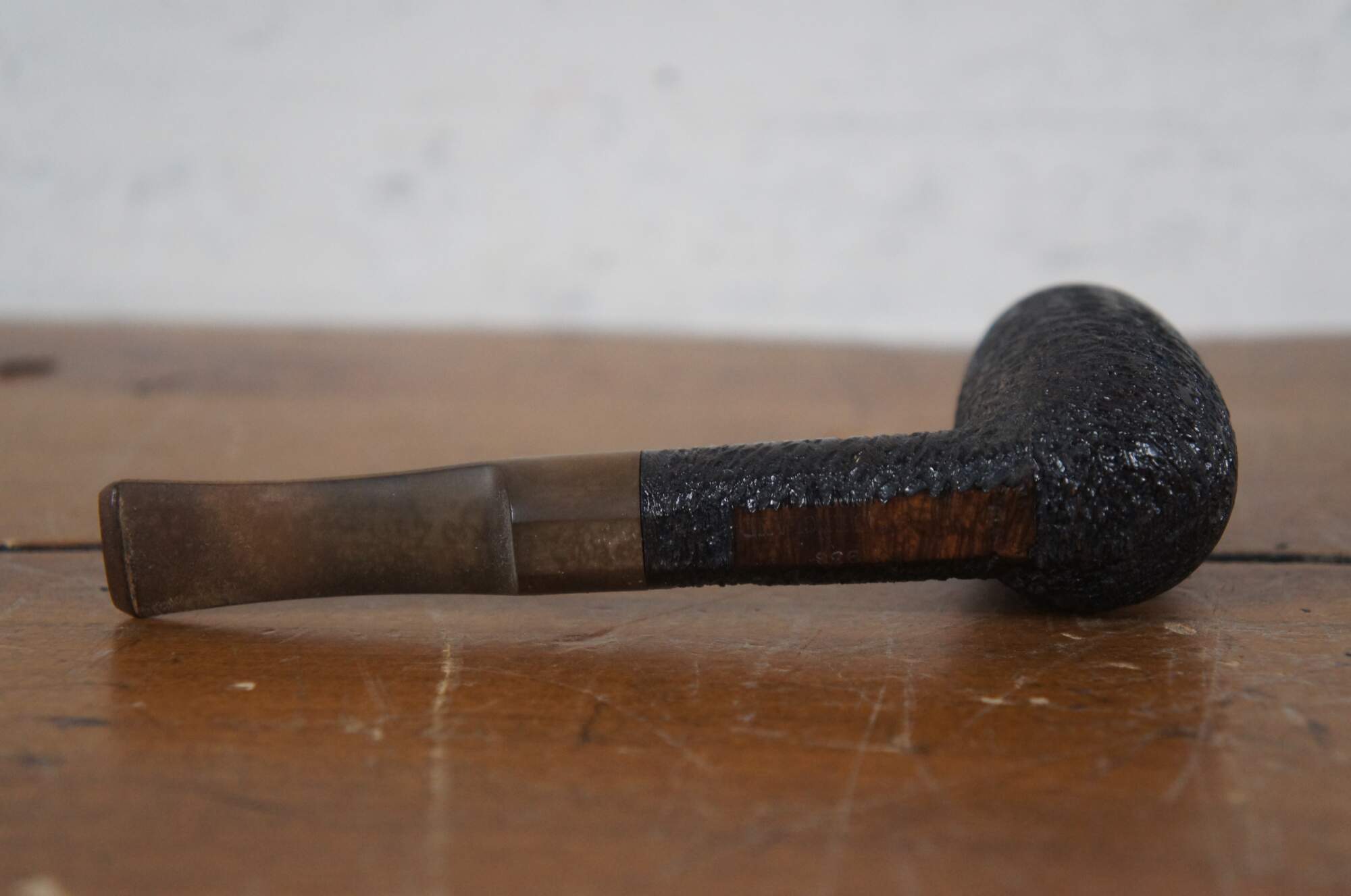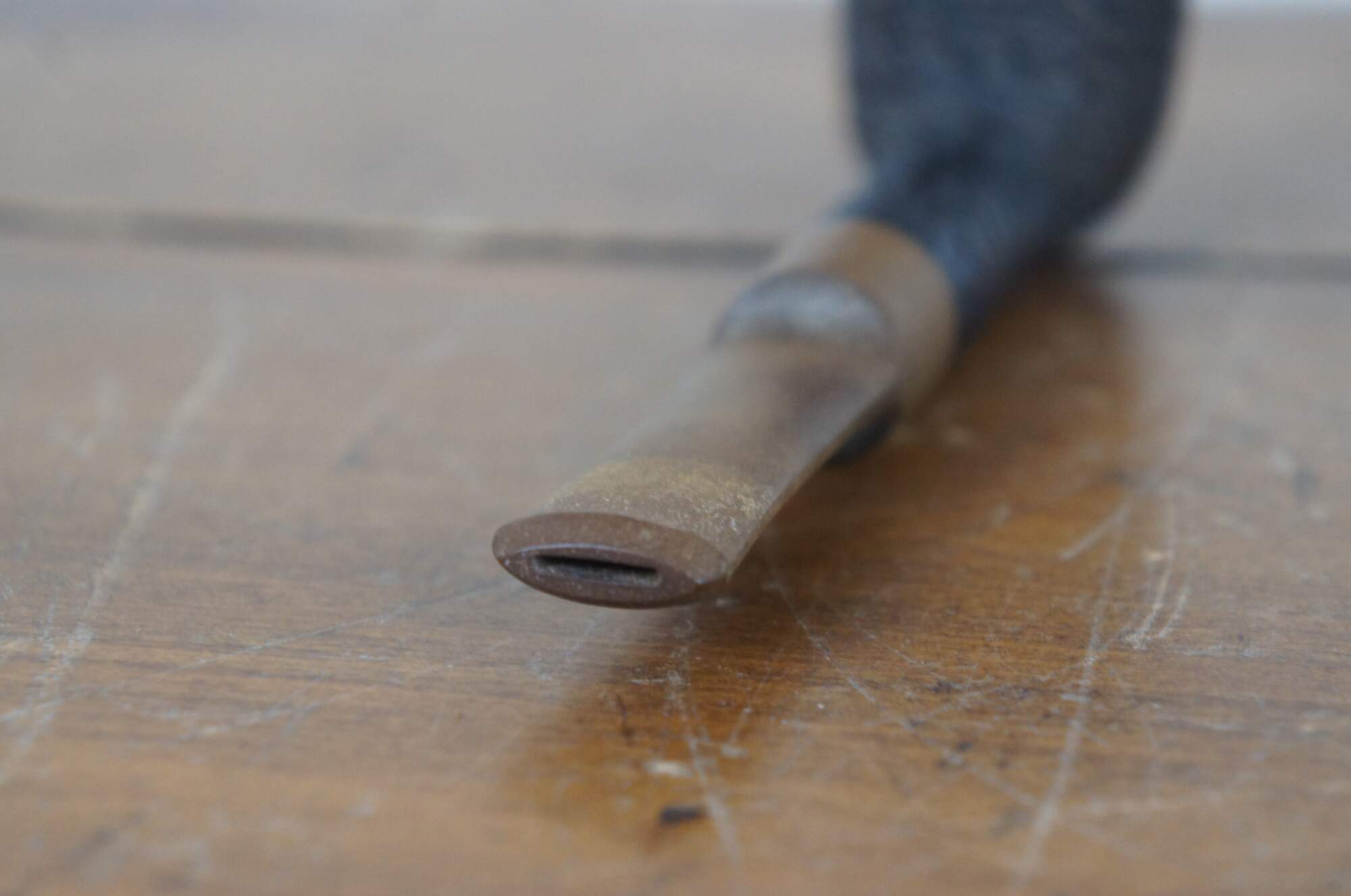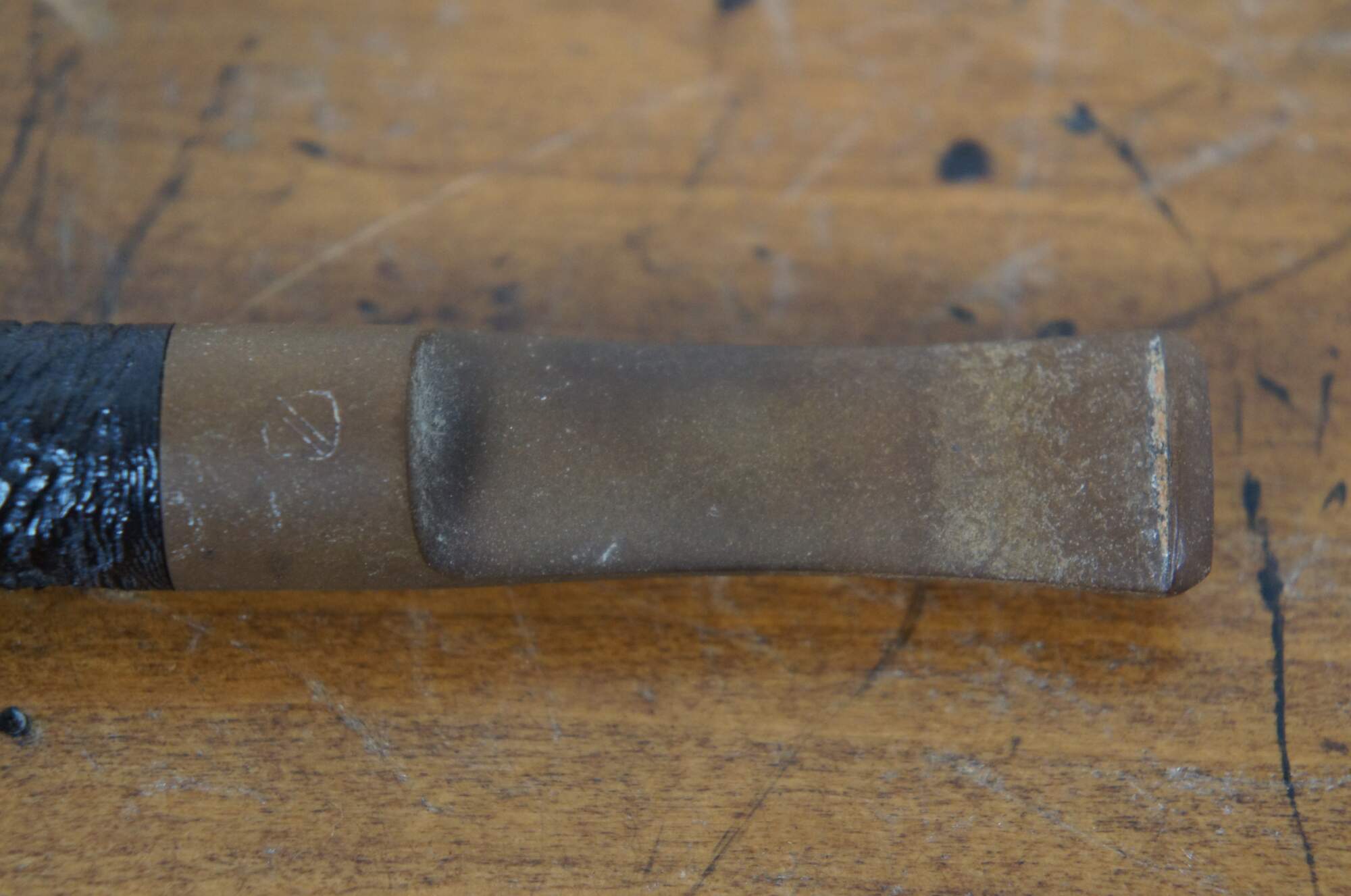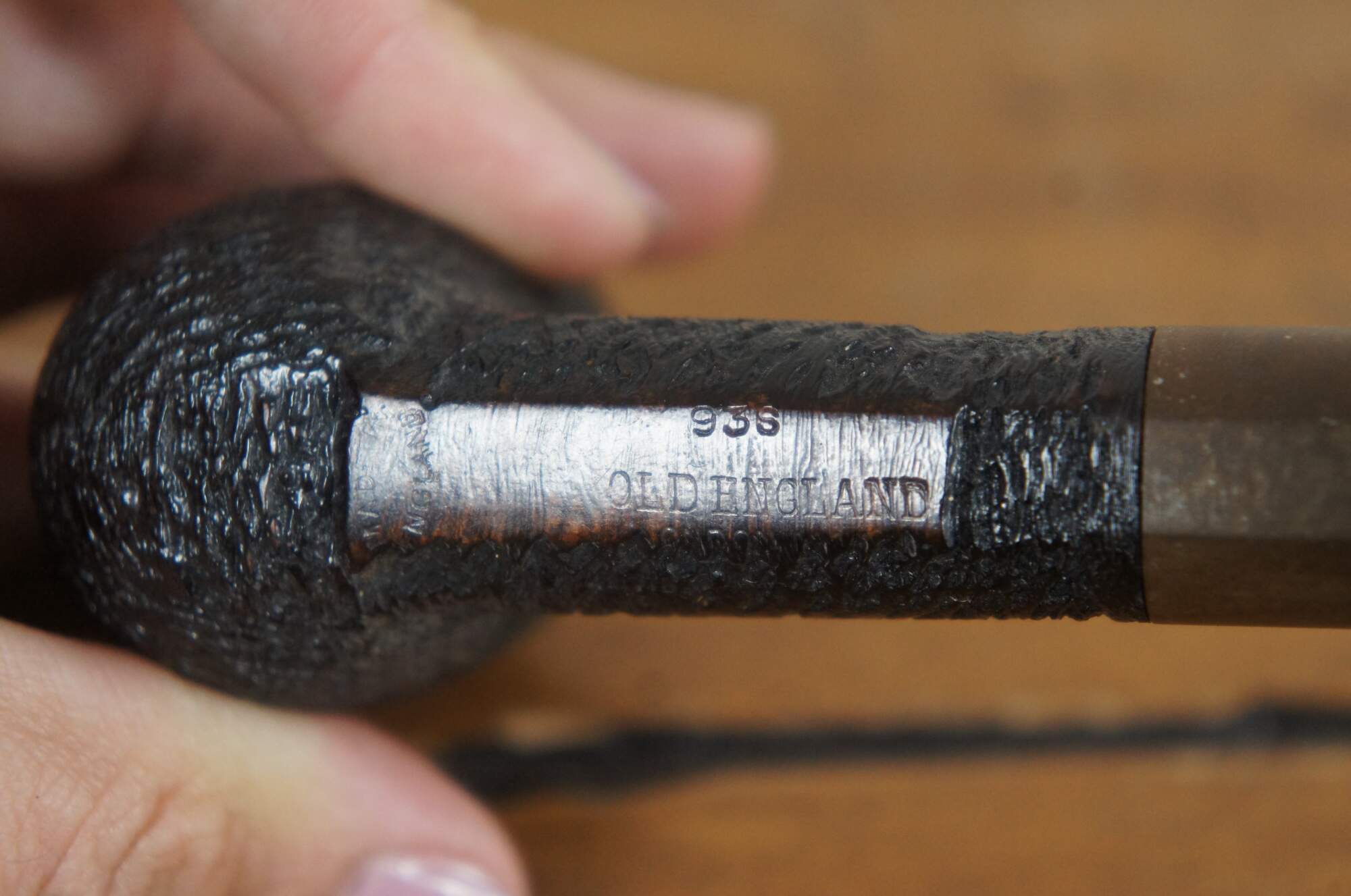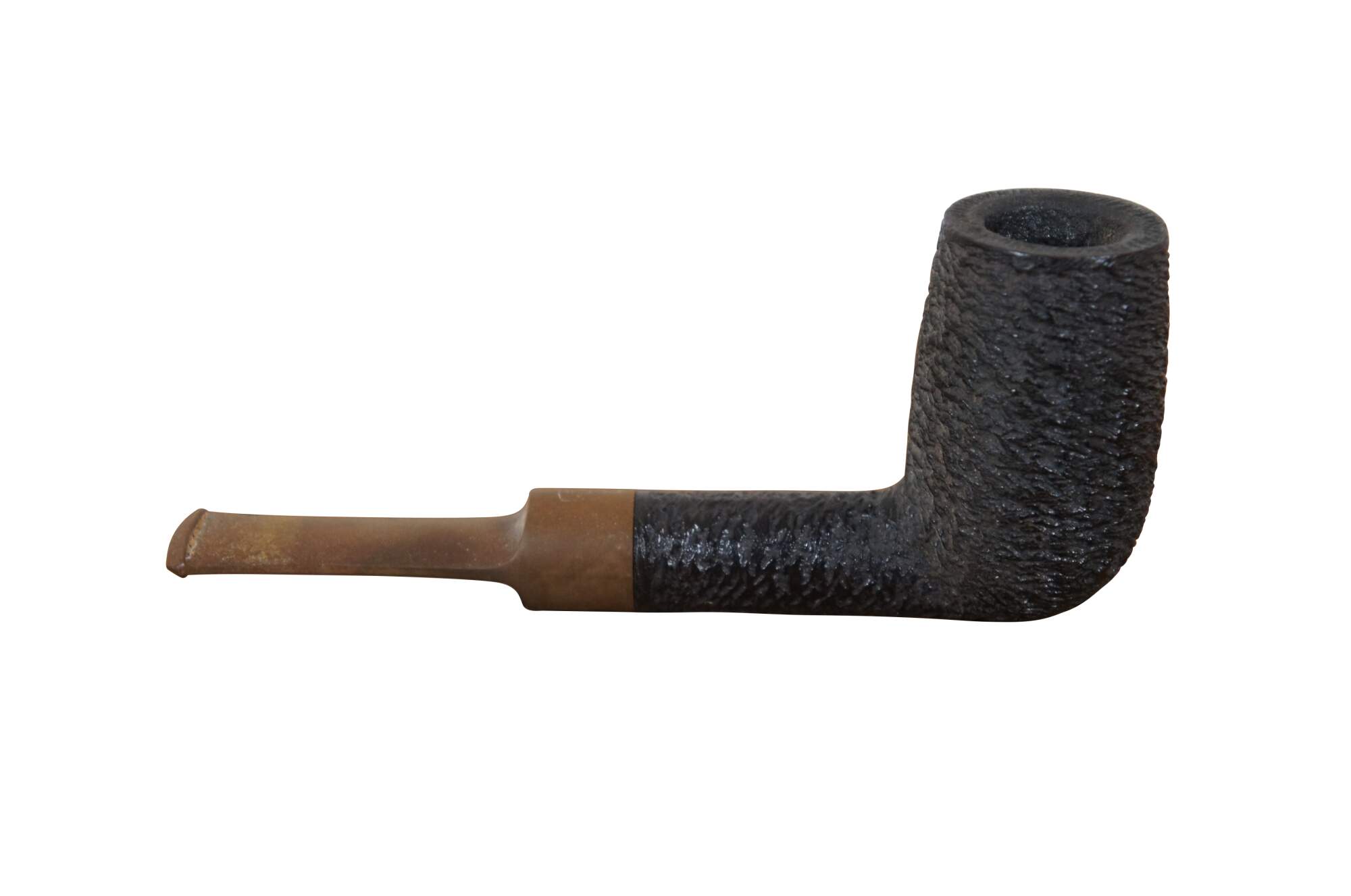
Sasieni 93S Old England Rusticated Briar Tobacco Smoking Pipe Stack Chimney
Sold
Shipping:
Free Shipping Included
Delivery:
Estimated 2-15 Business Days
Payments:
Credit Card, Check, Cash, PayPal, Apple Pay, Venmo
Returns:
30 Days 100% Money Back Guarantee, Buyer Pays Return Shipping
Description
20th century vintage Old England (by Sasieni) 93S windsor briar pipe with a rusticated sandblasted finish, saddle stem / mouthpiece and chimney stack shape. Marked: Made in England / 93S / Old England London Made. Stem marked with a shield with a diagonal stripe across it.
A Brief History of the Sasieni Company
Circa 1924 Patent, Courtesy Doug Valitchka
There is a great deal of mystery surrounding the Sasieni pipe, owing largely to the fact there is such a paucity of written information about them, as is the case with many collectible pipes. Even the name of the founder has been subject to debate. One respected source says the founder was named “Joel” Sasieni. Another equally respected source says with equal certainty the name was “Joseph” Sasieni. (A third, rather less reliable source once told me “Joel” and “Joseph” were brothers, but I think we can safely dismiss that.) An old Sasieni catalog which I came maddeningly identifies the founder as “J. Sasieni”. However, some research at the U. S. Patent Office conclusively shows that his first name was Joel.
Joel Sasieni apprenticed at Charatan, and moved on to Dunhill, where he eventually rose the position of factory manager. Many men would have been perfectly satisfied with such a position, but not Mr. Sasieni. He opened up his own factory in 1919, believing he could improve on some of Dunhill’s methods. Mr. Sasieni was, if nothing else, an optimist.
Things did not go smoothly for the new firm. The factory burned down almost immediately. Apparently undaunted, Mr. Sasieni simply rebuilt the factory and carried on.
One change he incorporated in his pipes was the method of curing the bowls. While the briar blocks were air cured, similar to Barling, Sasieni took this process a step further by “oven curing” his pipes. Each pipe was cured in an oven over a period of six weeks, being removed periodically by a factory worker, who would wipe away the moisture as it emerged from the bowl with a rag, and check it for cracks. The end result was Sasieni pipes (the ones that survived) were extremely dry smoking.
Sasieni was not oblivious to the success Dunhill had achieved with its famous “White Spot” logo, and while he obviously couldn’t copy the logo exactly, he apparently saw no problem with reinterpreting it a bit. Therefore, each Sasieni pipe which came out of the factory had a single blue dot in the stem.
Not surprisingly, the idea of their former employee competing with them using a very similar trademark didn’t exactly make Dunhill’s day. They threatened legal action in both the U. K. and the U. S.. Sasieni was saved in England by that country’s rather vague trademark laws, and the Sasieni One Dot continued to be produced for the European market for several decades.
Sasieni was not so fortunate in the U. S., where by the early 1920’s Sasieni had found an enthusiastic audience. In an initial attempt to comply with U. S. patent law, Sasieni moved the one blue dot to the side of the pipe. This unfortunately didn’t do the trick, and only a few side dot Sasieni’s were ever made, which are now extremely rare and collectible.
So, thanks in part to Dunhill’s patent attorneys, one of the most famous logos in the pipe industry was born. To clearly differentiate his pipes from Dunhill’s, and also to distinguish the American market pipes from all others (American market pipes originally only had a three month guarantee, although by the mid 1930’s this was extended to one year) Sasieni put four blue dots on the stem of his pipes, arranged in the shape of an elongated diamond.
The distinctive logo was an immediate hit in the U. S., where it, along with the pipes’ exceptional smoking qualities, helped the pipe to sell in such quantities the factory had trouble keeping up with the demand. In fact, by the 1930’s over 90% of Sasieni’s production was going to American shores.
Ah, but we Americans are a restless lot. We just don’t know when to leave well enough alone. So enamored had the U. S. market become of the four blue dots, the importer wanted to make sure they could be seen by everyone standing on each side of the smoker. Therefore Sasieni, reluctantly by some accounts, agreed to put four more dots on the right side of the stem.
The Sasieni Eight Dot is now the most collectible of all Sasieni pipes, due to both its scarcity and the fact that, unlike other Sasieni’s, the collector can be reasonably certain when the pipe was made. The Eight Dot made its debut in the late 1920’s or very early 1930’s, and was discontinued during W.W.II due to the inevitable shortages of supplies. Like the Four Dot, the Eight Dot had its logo made by individually inserting rods of blue plastic into pre-drilled holes in the stem, similar to the process used by Dunhill for their one white spot.
This was an excruciatingly difficult procedure, even on the Four Dot, for each dot had to be placed just right in order to create the desired diamond shape, and on the Eight Dot, both sets had to be symmetrical. For all that, it is rare to find a an original Sasieni bit in which the dots are even the slightest bit off. This in itself bears testimony to the fastidiousness with which Mr. Sasieni applied his craft. It also makes it fairly easy to spot a fake Sasieni stem.
Both the Eight Dot and the Four Dot were marketed in the U. S. during the pre-war years, with the Eight Dot fetching more money, even though both pipes used the same wood.
The post war years brought many changes at the Sasieni company, not the least of which was the death of Mr. Sasieni himself, in 1946. His son Alfred (named, perhaps, for his father’s arch-rival and former boss?) proved a worthy successor to his fathers’ business, and the company continued to thrive under his leadership. About this time the company started stamping “Four Dot” on the shanks of the pipes, to further capitalize on the now famous trademark’s prestige. There were other changes in both the shank nomenclature and the dots themselves, which will be reviewed in detail later on.
Through the post war years, Sasieni added shapes and lines. While the Four Dot remained their most famous product, the company also sold lines of “seconds” under various names, such as Mayfair, Fantail, Olde English, and Friar. These were pipes made of good wood, but possessed of some flaw, usually filled with putty. Pipes that were almost, but not quite, good enough to be a Four Dot were sold as Two Dots. I have two of these pipes in my collection. Both pipes are quite striking, exhibiting exquisite shapes and exceptional grain. At first I wondered why they were not Four Dots. Eventually, after long inspection, I discovered each pipe contained one very small filled flaw. In spite of this they remain two of my favorite pipes. However, it is clear Sasieni was determined to put the Four Dot logo on only the most perfect pipes.
Alfred Sasieni continued to run the company prosperously until 1979, when he sold out to another firm. Interestingly, he stayed on in the capacity of a director. At first it seems to have been a harmonious partnership. The new owners started their tenure with a limited edition reissue Eight Dot. This was a generous sized, natural stained smooth pipe which occasionally also had a gold band. Each pipe had a blue string running through the bowl, shank, and stem, affixed with a lead stamp and paper tab signed by Alfred Sasieni himself. These pipes are both strikingly handsome and maddeningly elusive, due to the fact only 100 (or so, accounts differ) were ever made.
This spirit of cooperation between the old and new owners does not appear to have lasted long. Alfred Sasieni believed only vulcanite should be used for pipe stems, eschewing the newer, trendier Lucite. When the new owners, contrary to Alfred’s wishes, issued a new Ten Dot, replete with Lucite stem, it seems Alfred decided he had had enough, and left the firm for good.
The new owners of what can accurately be called the “Transition” firm continued to create high quality pipes using the old wood and methods they inherited from the Alfred days. However, these pipes are not as collectible as the family pipes, and it is necessary for the collector to be able to differentiate between the two.
The new owners do not appear to have retained their interest in pipe making for very long, as they sold the company again in 1986. Unfortunately, this new, “Post-Transition” firm decided to abandon the high grade market place, and instead transformed the Sasieni into a mid range “smoker”, a metamorphosis from which it has yet to recover. The news owners decided to capitalize on the Four Dot mystique by eliminating all “second” lines, and issuing practically everything under the Sasieni banner as a Four Dot. This had the inevitable effect of lowering the overall quality of the line. For the first time, it was possible to find a Four Dot with a putty fill, which would have been unheard of when the family ran the company. Even the “Transition” firm maintained the integrity of the Four Dot line by marketing flawed pipes under some other line.
Ironically, it is generally agreed the two most active markets in this country today are the “high end” and “low end” markets, with the middle $35-$100 range being the most sluggish–precisely where the new Sasieni’s are now being marketed. Fortunately, fairly obvious changes in the nomenclature–to say nothing of the presence of putty–make it easy to spot a “Post-Transition” Sasieni.
Condition
Good Overall - Gentle wear commensurate with use
Dimensions
5.25" x 1.25" x 2" (Width x Depth x Height)
